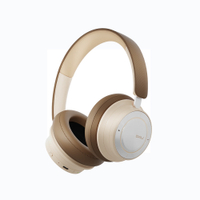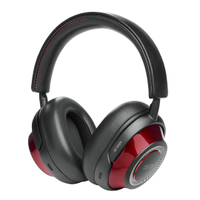What Hi-Fi? Verdict
The Bowers & Wilkins Px8 sell for big money but offer the luxury and performance to match
Pros
- +
Outstanding clarity
- +
Fast and punchy sonic presentation
- +
Lovely build and impressive comfort
Cons
- -
Limp sound at lower volume levels
- -
Wear on/off function can be erratic
- -
Lack of low volume adjustment when listening via USB cable
Why you can trust What Hi-Fi?
Recent updates
Updated 3rd February 2025: Over two years on since the Bowers & Wilkins Px8's release and our original five-star review, you'll now notice that these high-end headphones now clad the dome of one David Beckham. It's not just mere marketing; B&W has made a positive and lasting impression with their flagship headphones, and not just with famous football stars. We've updated this review to reflect the current market, new rivals that have emerged that we also recommend and additional tester's notes.
Bowers & Wilkins seems particularly bullish about its range-topping wireless headphones, the Px8. There’s the hefty asking price for starters, which easily shades that of Apple’s older but still ambitious AirPods Max. Then comes the press release that makes claims of reference standards across the board for performance, build and finish. That’s fighting talk, but at least it is backed up with real substance.
Price
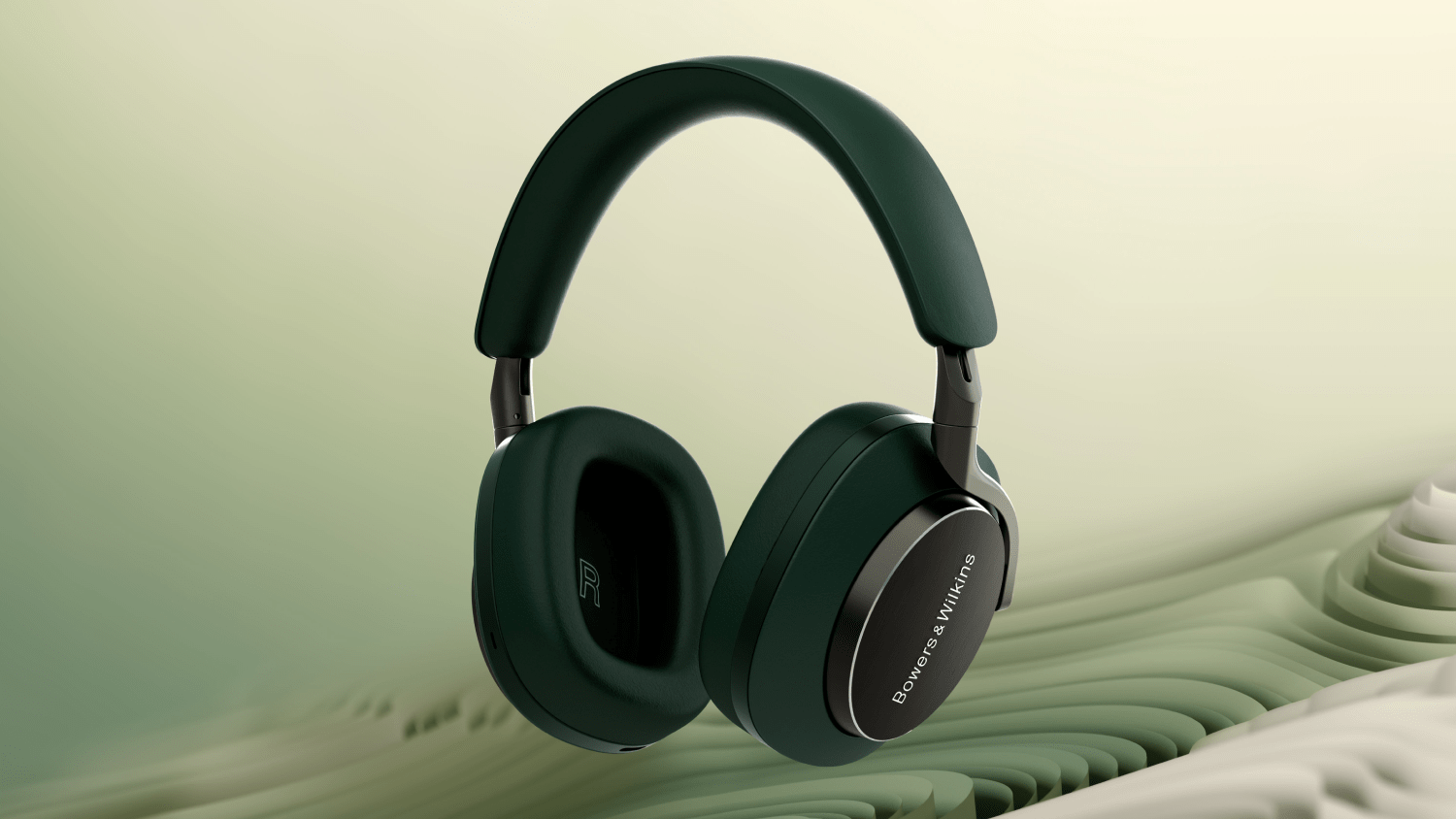
- Premium launch price in 2022
- Available for £100/$100 less at present
The B&W Px8 launched in September 2022 at a premium price of £599 / $699 / AU$1150, surpassing even the AirPods Max's original billing – a price bracket in the wireless headphones category that was still in its infancy two years ago.
There have been numerous premium wireless headphones since then – including even pricier models such as Mark Levinson No. 5909, Focal Bathys, T+A Solitaire T – and newer, five-star contenders in the form of the Dali IO-8 (£499 / $899 / AU$1150). The Px8 has also come down in price and you can pick up a pair for around £499 / $559 these days.
Build & design
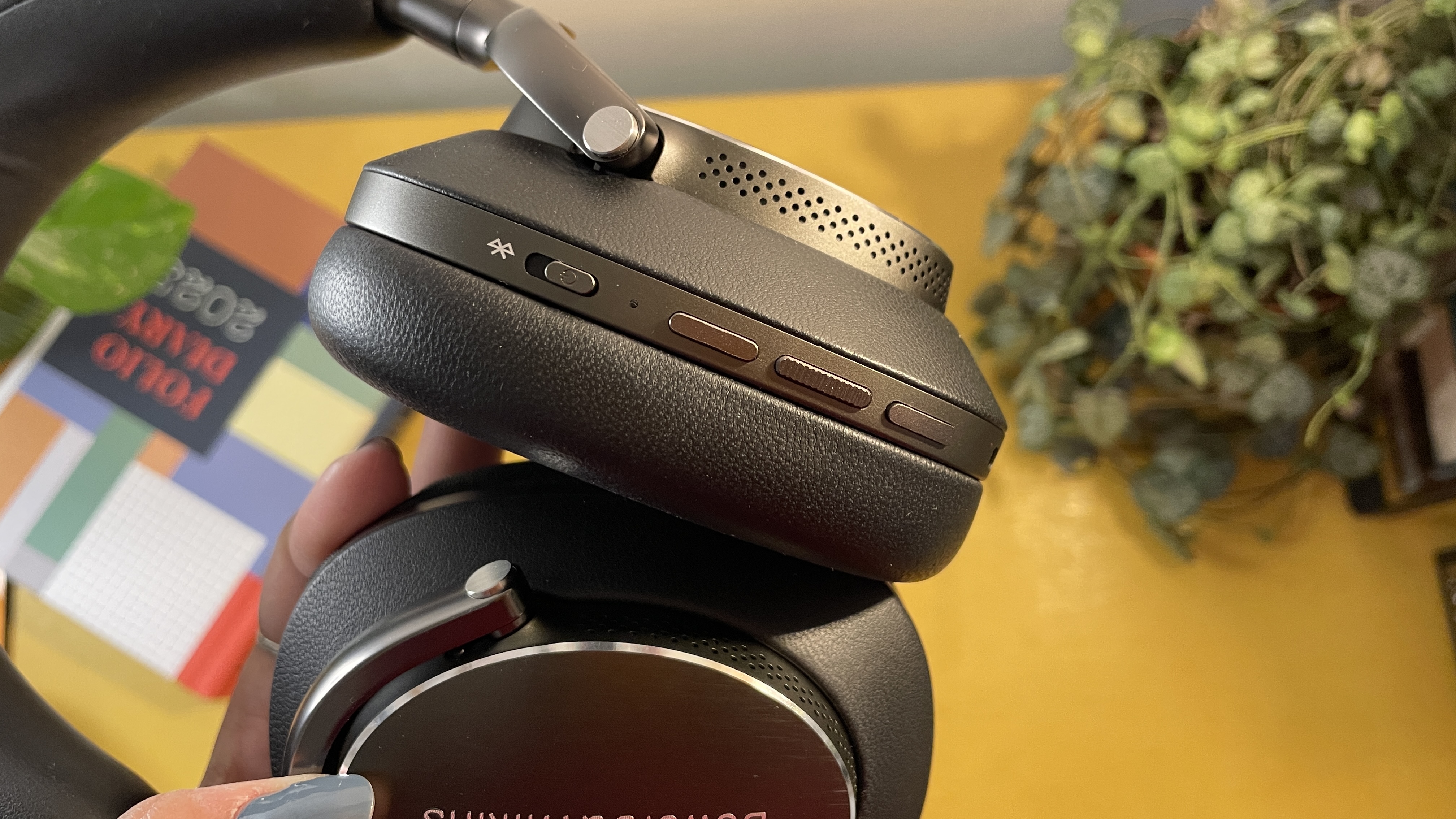
- Classy design and comfortable to wear
- 40mm carbon cone drivers; aptX adaptive codec support
- 30 hours battery life
Even two years on, the Px8 more than live up their premium billing. They stick to the company’s trademark classy aesthetic design that superbly manages the difficult balance between showy and luxurious. The high price of these headphones is certainly reflected in the quality of the materials, which have taken a big step up over the otherwise similar-looking (and cheaper) Bowers & Wilkins Px7 S2 and Px7 S2e headphones.
There is lovely soft Nappa leather on the headband, earcups and earpads, which feels really pleasant to the touch. You can now get the Px8 in four finishes – black, tan, royal burgundy, forest green – and all look smart. Elsewhere, the cast aluminium arm structure is beautifully finished and feels precisely engineered in the way it slides and pivots. Unlike some rivals though, all this premium goodness doesn’t add much in the way of weight, with the Px8 coming in at an entirely reasonable 320g. That is around 60g less than its rival from Apple. Add this reasonable weight to the well-shaped headband and nicely designed earpads, and the result is a pleasing degree of comfort, even over extended use.
The biggest technical difference between these headphones and their cheaper sibling comes down to a change of cone material for the 40mm driver on each side, from bio-cellulose (paper) to carbon fibre. This carbon cone is claimed to be lighter, more rigid and better controlled in its behaviour, so reducing distortion and improving transparency. The rest of the drive unit is relatively unchanged bar tweaks to the motor system to account for the reduced mass of the new cone.
Beyond the cone material, the spec sheet reads the same as for the Px7 S2, but that’s no bad thing. The Px8 have Bluetooth 5.2 with aptX HD and aptX Adaptive compatibility for higher quality streams, four microphones for active noise cancelling plus another two for voice pick-up in phone calls and a claimed 30-hour battery life. That stamina is certainly enough to cover long-distance flights and most other use cases we can think of, but it’s hard to ignore the fact that cheaper alternatives such as the Sennheiser Momentum 4 Wireless can double that number.
Features
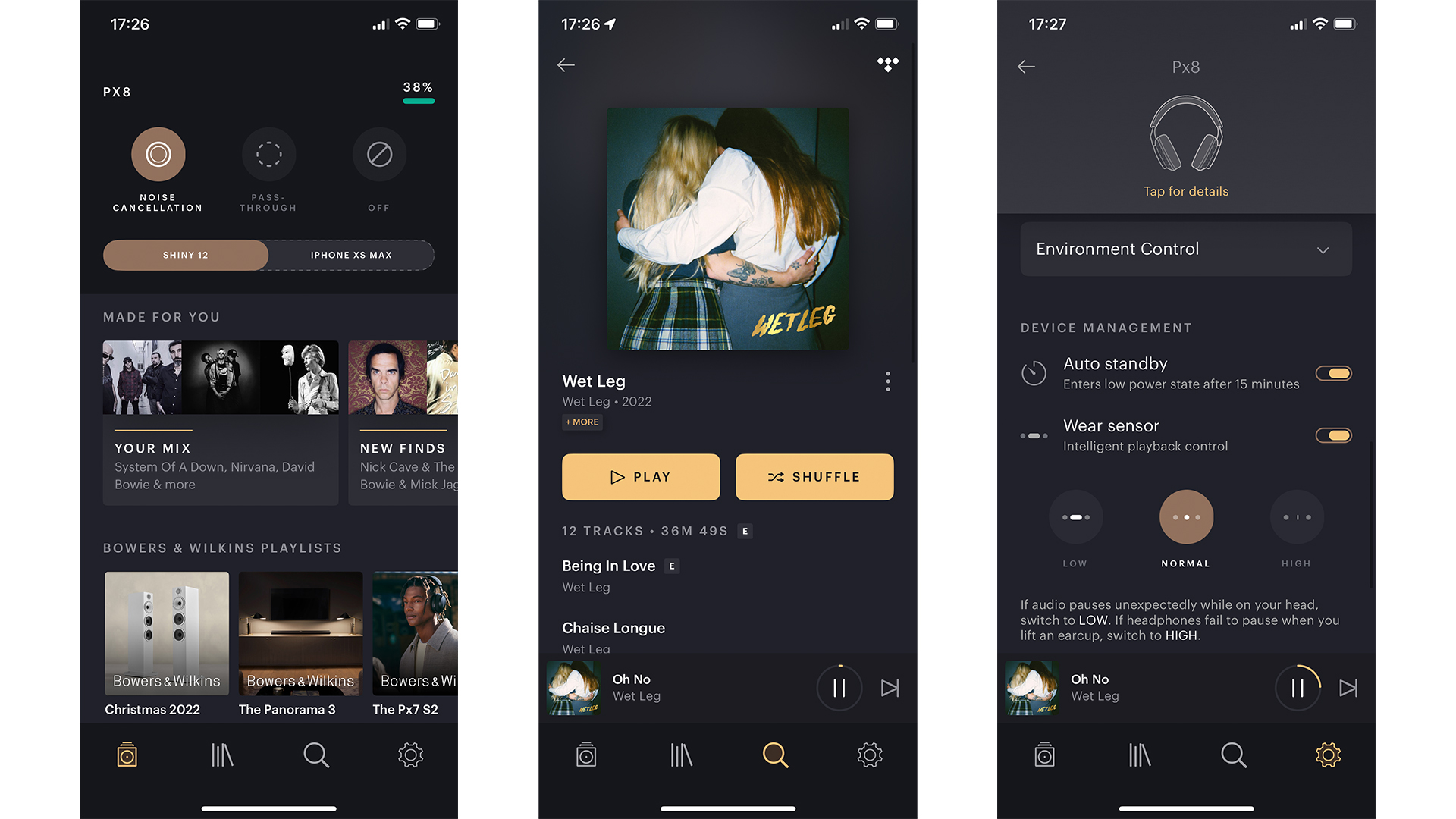
- Physical buttons on earcups result in reliable control
- Decent ANC quality, but cheaper rivals from Sony & Bose offer more silence
- Wear detection feature can be temperamental
We’re glad Bowers & Wilkins has kept faith with physical buttons on the earcups rather than going the touch control route. We find this approach more reliable and intuitive which means less fumbling around when on the move. The precise-feeling controls are pretty simple with the button on the left-hand earcup either switching through noise cancelling options – on, passthrough and off – or activating your phone’s voice assistant, depending on how things are configured in the partnering app. The recently upgraded Bowers & Wilkins Music app also includes adjustments for bass and treble tone controls and the sensitivity of the wear sensor.
This app has evolved significantly since we last looked at it and can now link directly to music services such as Tidal, Qobuz and Deezer so that everything can be controlled from one place. It also helps to produce a more cohesive user experience if you own other network-linked Bowers & Wilkins products, all of which can be controlled from this app.
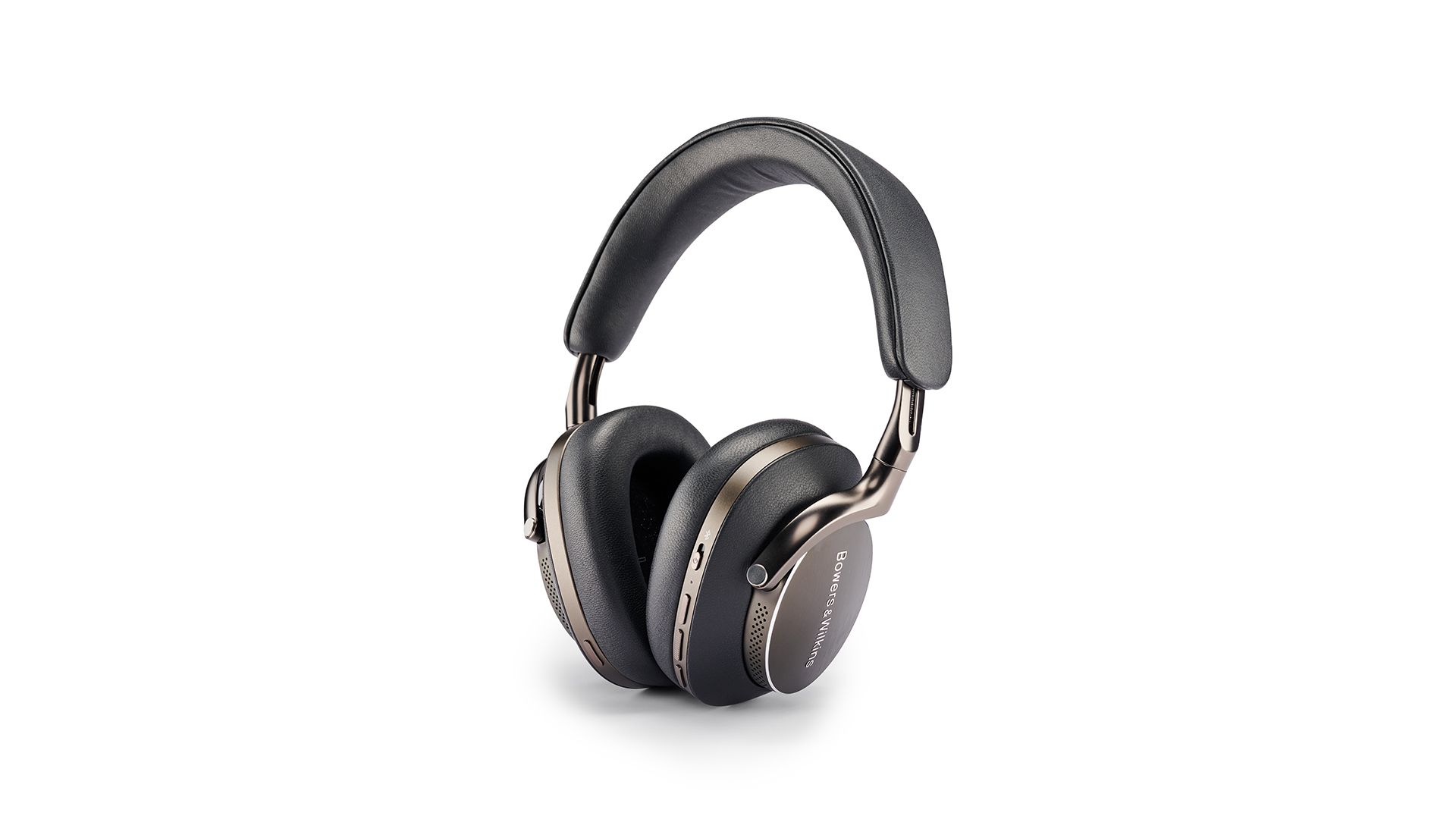
Bluetooth 5.2
Codec support aptX Adaptive, aptX HD, aptX, SBC, AAC
Battery life 30 hours
Noise cancelling Yes
Drive unit 40mm carbon cone
Charging USB-C
Weight 320g
Finishes x 4 (black, tan, royal burgundy, forest green)
The app proves stable in use though we have issues with the wear sensor feature. The idea is that the music stops when you take the headphones off and restarts when you put them back on again. There are three levels of sensitivity, but even on the lowest setting, we find that the music occasionally halts unexpectedly, even when we haven’t removed the headphones. Admittedly, we’re usually walking somewhere, but Apple’s AirPods Max manage just fine in such circumstances. We end up turning the wear function off to avoid annoyance. On a positive note, the Px8’s structure is low-resonance and deals with footfall vibration better than most.
The Px8 come with a USB-C to USB-C cable for connection directly to your computer and also a USB-C to 3.5mm alternative. There is a definite drop in performance when we use the 3.5mm option, but that’s to be expected given the extra processing involved in the signal path. The all-USB-C link sounds better, though we notice that there is a lack of low-level volume adjustment from our MacBook Pro. It is not an issue when listening at higher levels but the volume steps are way too coarse for quieter sessions.
We try the Px8’s call quality and it is generally decent. We have no issue with clarity, though voices come through with a bit of an unwanted edge. Background noise levels are acceptably low but not outstanding and wind noise on a blustery day can be a slight issue, as it often is on headphones such as these.
Noise cancelling is generally good, too. Things are nice and quiet during our train journeys though sudden or non-regular sounds such as workers digging the street or traffic noise still manage to break through. But, the same could be said for most rivals. If absolute quietness is a priority then Sony’s cheaper WH-1000XM5 and masters-of-ANC Bose QuietComfort Ultra Headphones do it even better. But, it is important to note that the Sony and Bose cans don’t sound as good as the Px8.
Sound quality
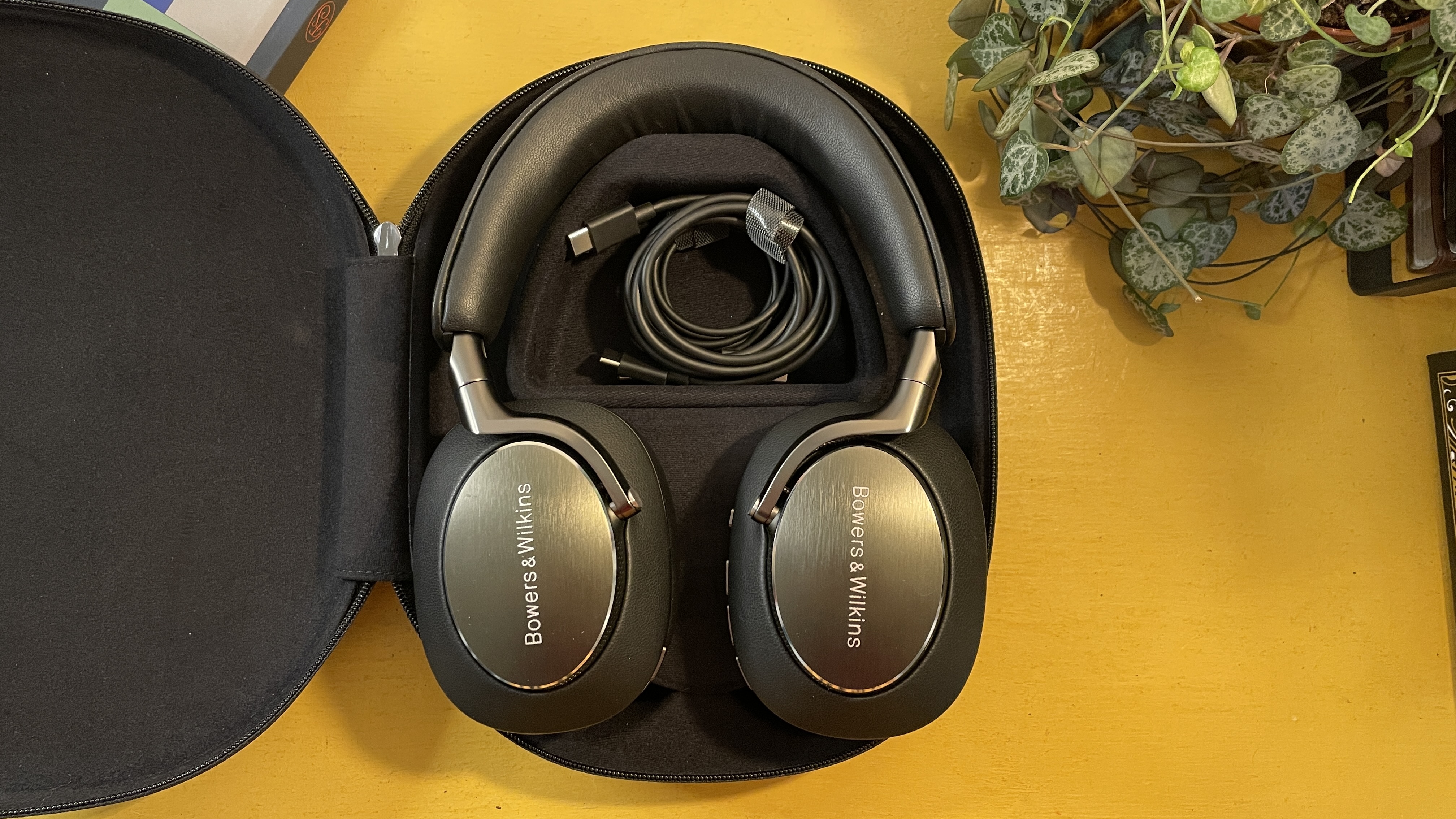
- Excellent levels of clarity, precision and detail
- Exciting presentation (especially at higher volume)
- Fast, agile, controlled bass and rhythmically fun sound
- New rivals deliver greater insight, space and clarity
Anyone familiar with recent efforts from Bowers & Wilkins won’t be surprised with what the Px8 deliver in sound quality, but they will still be impressed. There is a level of clarity and insight here that we haven’t heard bettered at this level. Performance is a clear step ahead of talented but cheaper alternatives such as the aforementioned Sonys or the new Sennheiser Momentum 4 in pretty much every area. There is more precision and clarity than the Apple AirPods Max too.
We listen to Raye’s All Of My Love and the Px8 sound right at home, thumping out bass with enthusiasm. It is a taut and controlled sound that is packed with excitement, provided you listen at higher levels. Drop the volume level down and some of the music’s sparkle and energy fade. This kind of thing isn’t uncommon in products such as this, but the Px8 do seem to suffer more than most. Interestingly, we’ve often noted a similar trait in the company’s speakers too. Maybe B&W needs to pay more attention to performance at lower volume levels during the product development process.
Volume issues aside it is all good news here. The Px8’s midrange is crisp and clear, communicating vocal nuances superbly. These headphones reveal an impressive amount of detail and just as importantly present it in a musically cohesive way. There is a reassuring sense of control here and the ability to track low-level instrumental strands, even when the music gets busy.
You also get a good sense of rhythmic drive along with all the analysis. These B&Ws are fun to listen to and are able to communicate the energy in the music well. It helps that they are impressively agile and responsive, tracking the music signal with the determination of a bloodhound.
We switch to Stravinsky’s The Rite Of Spring and the Px8 continue to shine. They convey the music’s dynamic sweeps superbly and reveal plenty of low-level detail in the recording. We’re impressed by the headphones’ composure when the music gets demanding and the feeling of scale and authority they generate. This is something that headphones as a breed don’t tend to do so well.
This is a refined listen too without sounding overly smooth. The Px8 are certainly revealing enough to show up shortcomings in the source or recording, so you’ll need to make sure the signal feed into them is good enough to allow them to shine. A slightly cool tonal balance doesn’t help them to be forgiving either, though they won’t go out of their way to make things sound worse than they are.
As we mentioned earlier, rivals have emerged on the scene that push the performance boundaries even further. Focal's Bathys offer a wider, more spacious soundstage and a richer tonal balance, while the Dali IO-8 digs out even more detail and clarity while having superb rhythmic and dynamic prowess that just about edges past the Px8's capabilities.
Verdict
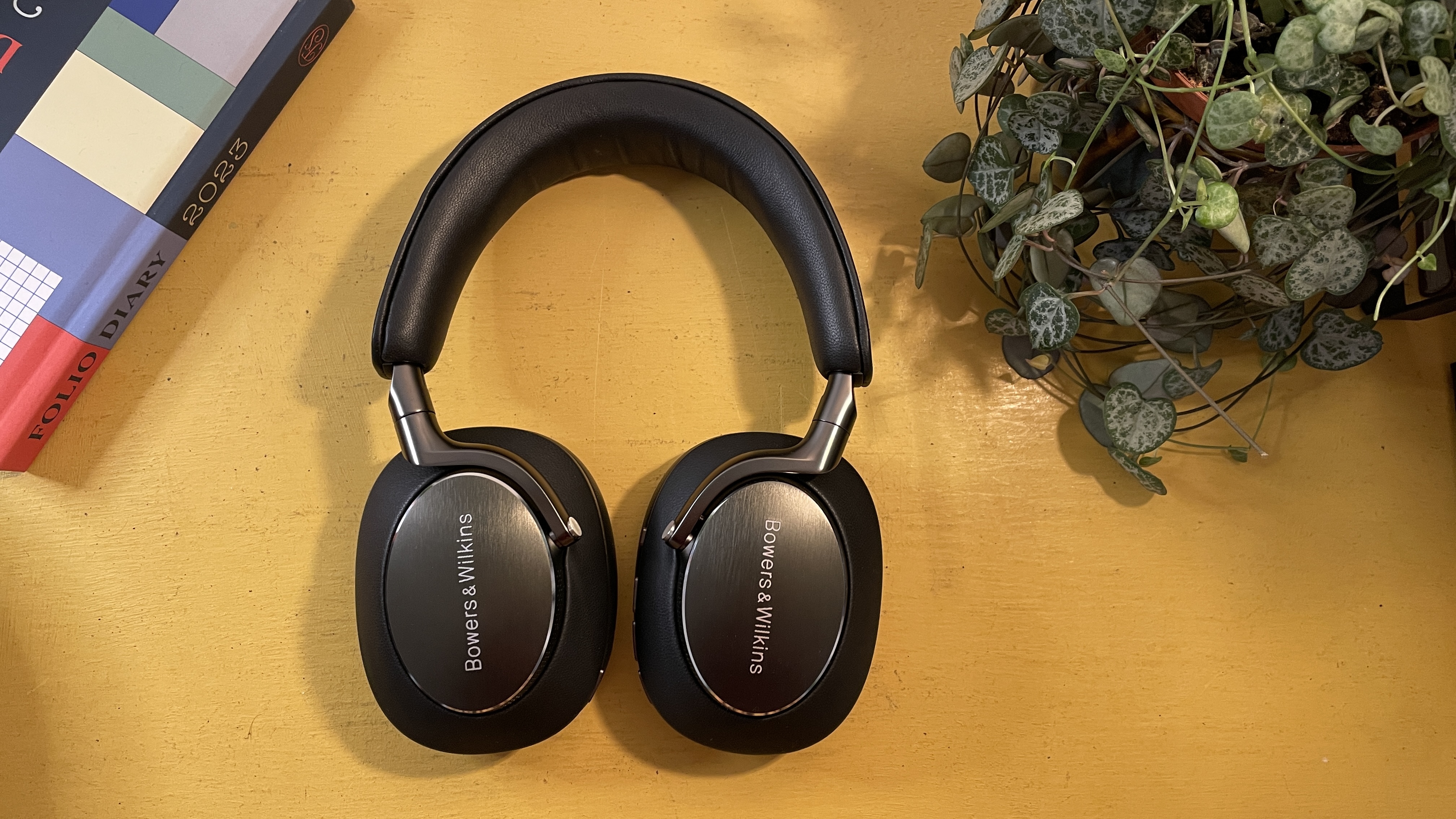
Overall, the Bowers & Wilkins Px8 are hugely capable performers that justify their price with a combination of build and sound quality that cheaper alternatives just can’t match. Apple’s AirPods Max may have kick-started the market for higher-end wireless noise-cancelling headphones but, to our ears, these B&Ws deliver even more in the way of musical insight and enjoyment than Apple's best.
There are some niggles but nothing that comes close to denting our enthusiasm for these headphones. While newer rivals have emerged that offer even better sound and ANC quality, the Px8 remain a fine effort with serious appeal, and deserve serious consideration if you are buying at this level.
First reviewed: October 2022. Review updated: February 2025
Tester's notes
Our review process includes evaluating the B&W Px8 in a number of key areas and comparing them to price rivals we highly rate. This allows us to build a picture for the reader of where these headphones sit in their specific category and price bracket. Our findings (ratings out of five) are listed below.
| Header Cell - Column 0 | Tester's notes | Rating |
|---|---|---|
| Value | Excellent sound, good features, luxury design and comfort justify the high price | 5/5 |
| Design | High quality materials, beautifully engineered and looks and feels luxurious, especially in certain finishes | 5/5 |
| Comfort | Comfortable to wear over long listening periods | 5/5 |
| Codec support | High-quality aptX Adaptive codec supported | 5/5 |
| Features | Wired listening via USB-C and 3.5mm, good music app support | 4/5 |
| Sound quality | Outstanding clarity and detail, taut and punchy bass performance, rhythmically fun, but newer rivals deliver even more insight and space | 5/5 |
| Noise cancelling | Decent levels, but beaten by cheaper rivals | 4/5 |
| Call quality | Clear voices, low background noises, although wind noise comes through | 4/5 |
| Battery life | Decent but not oustanding | 4/5 |
Also consider
Mark Levinson No. 5909
They may not exude luxury quality like the Px8 and Dali (above), but these expensive Mark Levinsons are superbly comfortable and functional, as well as sounding superb. Wired listening is also on the menu.
MORE:
Bowers & Wilkins Px8 vs Apple AirPods Max: which wireless headphones are better?
Want a cheaper version? Read our Bowers & Wilkins Px7 S2e review
Our pick of the best noise-cancelling headphones
What Hi-Fi?, founded in 1976, is the world's leading independent guide to buying and owning hi-fi and home entertainment products. Our comprehensive tests help you buy the very best for your money, with our advice sections giving you step-by-step information on how to get even more from your music and movies. Everything is tested by our dedicated team of in-house reviewers in our custom-built test rooms in London, Reading and Bath. Our coveted five-star rating and Awards are recognised all over the world as the ultimate seal of approval, so you can buy with absolute confidence.
-
jiminhno I do wish the reviews had some direct comparison with a similar priced headphone like the Focal Bathys, I have those headphones and I generally love them, for the super clear detailed sound, they sound fantastic with my Pixel 7 Pro, and varia connection to a Surface Pro 8 in USB DAC mode, with that said I've also recently bought these B&W PX8 and look forward to testing them out and doing a direct comparison, when I receive them, to me me personally I wouldn't compare these B&W to apple headphones Max or what ever they are called, as I would hope the overall sound character, build, is Miles better than what apple could produce, currently anyway.Reply -
hybridauth_Google_111697497309163812554 We desperately need a comparison of B&W px8 and Focal Bathys. Looking forward to it so we can choose the right onesReply -
sumek How do PX8s sound with iPhones which dont support Aptx Adaptive? What codecs are used when connecting wireless with iPhones?Reply -
jiminhno Reply
I would say AAC from a iphone would be still quite good but to get the best out of these PX8 wirelessly you would need to use a Android smartphone that supports Aptx adaptive, plus music files that are of a higher qualitysumek said:How do PX8s sound with iPhones which dont support Aptx Adaptive? What codecs are used when connecting wireless with iPhones? -
sportiv I like to listen to a loud sound so that my ears can feel the explosion and excitement as much as possible. But what about their loud sound? Or is he as modest as in Sony?Reply -
jiminhno I'm using a Pixel 7 Pro for wireless usage with all my wireless headphones, they are connected with Aptx X with this Smartphone and sound phenomenal, Now from what I have read and watched on YouTube, the PX8 has a more exciting, expressive, engaging sound, that is particularly good with bass extension compared to the Focal Bathys, the Only little downside to the Focal Bathys I can add, is the lack of Bass when sometimes you expect that hit from certain music tracks, other than that the overall sound character is perfect on the Focal Bathys, they are super smooth, natural sounding, have a more reference sound to them, so for those folks after that type of sound this Focal Bathys headphone is the flagship, that we all have been waiting for, with that all said I haven't got my PX8 yet, so once I do, I'm super eager to test them, I'm expecting the bass hits on tracks, to be more impactful with the PX8s, only time will tell 👌Reply -
vectorious Where did you get the version pictures with the bronzy finish on the metal? On B&W's own website it looks black, and I really like the look of the version you picturedReply -
happy boy Replyjiminhno said:I do wish the reviews had some direct comparison with a similar priced headphone like the Focal Bathys, I have those headphones and I generally love them, for the super clear detailed sound, they sound fantastic with my Pixel 7 Pro, and varia connection to a Surface Pro 8 in USB DAC mode, with that said I've also recently bought these B&W PX8 and look forward to testing them out and doing a direct comparison, when I receive them, to me me personally I wouldn't compare these B&W to apple headphones Max or what ever they are called, as I would hope the overall sound character, build, is Miles better than what apple could produce, currently anyway.
Preview
I understand that the Bathys have a built in DAC, while the PX8 do not. I also have a Pixel 7 Pro and want to use a wired connection while at home. Would it be possible to use an external dongle type DAC, such as the Helm Audio Bolt, between the phone and PX8? That is my plan, but I am not sure if it will work. I am assuming that I can use the supplied 3.5mm jack to USB-C wire to connect the DAC to the PX8's, but I am not sure if the DAC will work with Bluetooth headsets in that manner. -
Domain Rider You can use either an external DAC or a direct USB connection between phone and the PX8 if the Bluetooth sound isn't good enough. Cables are supplied for both.Reply
